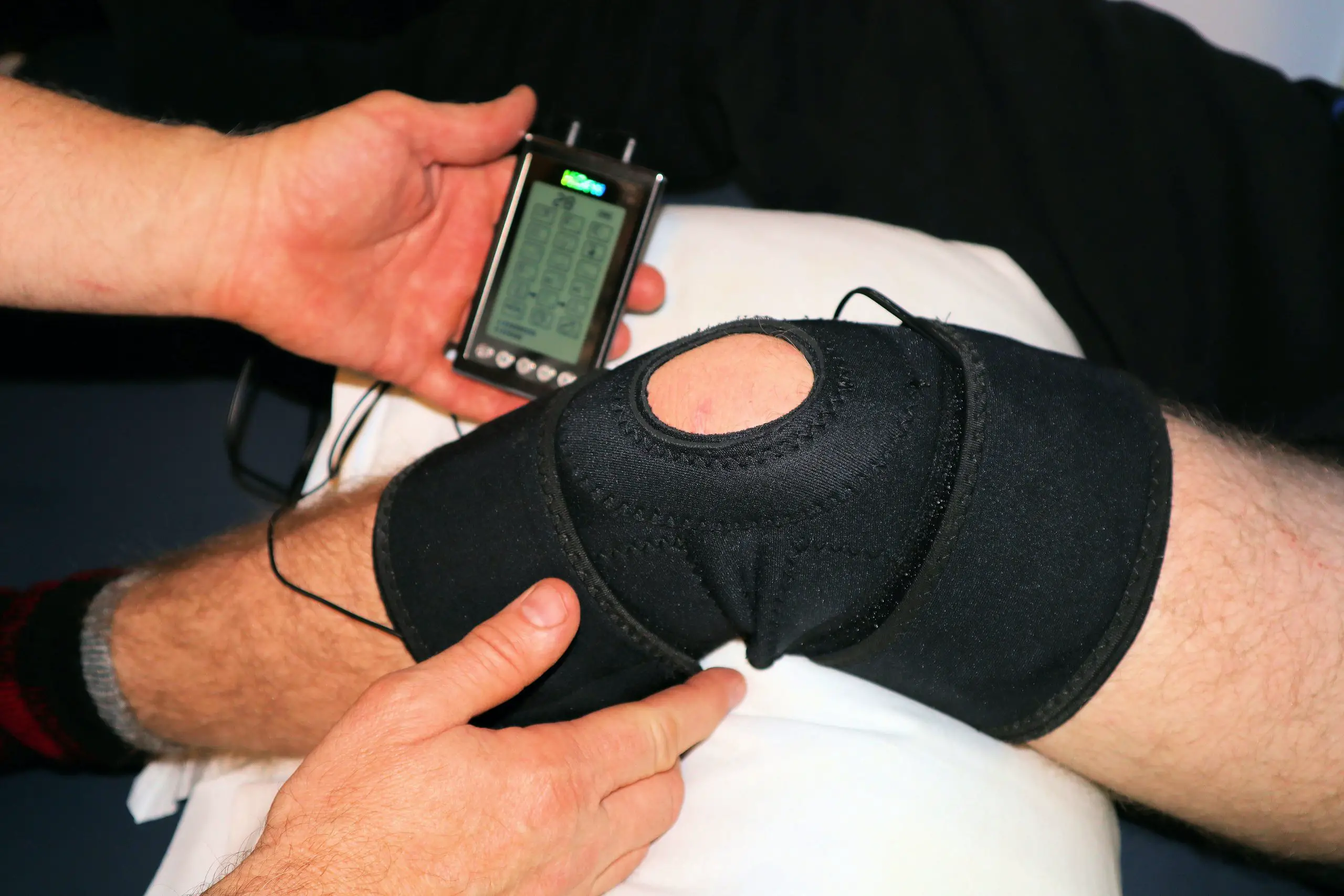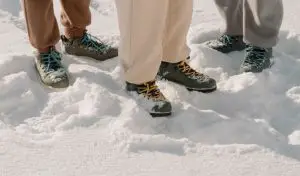When Can You Hike After ACL Surgery?

A few years back, one of my good hiking buddies, Pete, tore his ACL during one of our pickup basketball games. It was a non-contact injury, and he knew right away that something was wrong. As it turned out, he needed ACL surgery and was told by his doctor that he wouldn’t be able to hike, or play basketball for that matter, for at least six to eight months.
While we were both bummed out about the news, we decided to stay positive and use the time as an opportunity to plan some epic hikes for when he was fully recovered. In the meantime, I wanted to share his timeline and recovery for the purposes of this post in case any of you are going through the same thing.
Quick Links
What Is The Typical Recovery Time For A Torn ACL?
A torn ACL is a serious injury that can take months (even a year) to recover from. The typical timeline for ACL surgery recovery is around six to nine months, but this can vary depending on the individual. Some people may be able to return to hiking sooner, while others may need to wait longer. It’s important to consult with your doctor before returning to any physical activity after ACL surgery.
In addition to that, most people will need to go through physical therapy as part of their ACL surgery recovery. Physical therapy can help you regain strength and flexibility in your knee. It is important to follow your physical therapist’s instructions carefully and do all of the recommended exercises. Doing too much too soon can delay your recovery.
Can I Still Hike with A Torn ACL?
A torn ACL will certainly put a damper on your hiking plans. Even if you are able to walk, the risk of further injury is too great to justify going on hikes. It is best to wait until your knee has healed completely before attempting any strenuous activity. While it may be frustrating to have to sit out on all the fun, it is better to be safe than sorry.
The first thing you need to do is consult with your doctor. I can only give you advice based on my friend Pete and his experience. Your doctor will be able to give you specific instructions based on your individual case. Once you have been cleared by your doctor, you can start thinking about getting back out on the trails.
If you are planning on doing any serious hiking, it is important to ease back into it. Start with shorter hikes and gradually work your way up to longer ones. It is also important to listen to your body. If you start to experience any pain, swelling, or discomfort, stop hiking and consult with your doctor.
If you are set on hiking, there are a few ways you can still enjoy the outdoors. Try going for shorter walks on level ground instead of long hikes. You can also try other outdoor activities like kayaking, where you won’t have to put too much weight on your knee.
I tore my Achilles a few years back, and it was immediate, excruciating pain. I gave up my crutches early and went against my doctor’s orders to put any weight on it for six weeks minimum. I started walking after three weeks without crutches, and boy, was that a mistake.
The moral of the story – listen to your body, take your doctor’s advice, and give your knee time to heal. Pushing yourself too hard can delay your recovery and set you back even further. Be patient; soon enough, you’ll return to the trails again.
How Soon After ACL Surgery Can You Go Hiking? (Back to Hiking Timeline)
Most people will need to wait at least nine months after ACL surgery before attempting to hike again. This timeline can vary depending on the individual. Some people may be able to return to hiking sooner, while others may need to wait longer. It is important to consult with your doctor before returning to any physical activity after ACL surgery.
In addition to that, most people will need to go through physical therapy as part of their ACL surgery recovery. Physical therapy can help you regain strength and flexibility in your knee. It is important to follow your physical therapist’s instructions carefully and do all of the recommended exercises. Doing too much too soon can delay your recovery.
Can ACL Injuries Occur While Hiking?
Absolutely. ACL injuries can occur while hiking, especially if you are not careful. The most common cause of ACL injuries is twisting or turning your knee suddenly. This can happen if you slip on a wet rock or lose your footing on loose dirt.
If you’re on a challenging hike requiring scrambling or carrying a heavy backpack, you’re at an even higher risk for ACL injury. That’s because your knee is more likely to give out when you’re already fatigued or carrying extra weight.
I never had to deal with an ACL tear but have experienced knee injuries while hiking. The feeling of sudden pain in your knee while hiking is definitely not a good one – it’s downright scary. If you think you may have injured your ACL, it is best to seek medical attention immediately.
Preventing ACL Injuries on Your Hikes
There is a laundry list of ways you can prevent ACL injuries on your hikes. Let’s get it started:
Be Aware Of Your Surroundings
First and foremost, it is important to be aware of your surroundings and hike with caution. This means watching your step, being careful on wet or slippery surfaces, and not taking any unnecessary risks. Like I said, the most common cause of an ACL tear is a sudden pivoting maneuver, so do your best to avoid any sudden movements.
Stay In Good Shape
I know this one is easier said than done – but another important way to prevent ACL injuries while hiking is to stay in shape. Strong muscles will help support your knees and reduce the risk of injury. Be sure to focus on strengthening your thighs, hips, and core before hitting the trails.
Wear The Right Gear
One final way to prevent ACL injuries is to wear the right gear. This includes supportive shoes that fit well and knee braces or compression sleeves if you are particularly susceptible to knee injuries.
Knee Braces are often underused when hiking, but they can be extremely helpful in preventing ACL injuries. If you have a history of knee problems, consider wearing a brace on your next hike.
Compression sleeves are also a great option for hikers who want to prevent ACL injuries. These sleeves provide support and stability to the knee joint. They are especially beneficial for long hikes or hikes with a lot of elevation change.
Consider Trekking Poles
Trekking poles can also be a big help in preventing ACL injuries. They provide extra support and stability, which can be helpful on uneven or slippery terrain.
Conclusion
So, when can you hike after ACL surgery? Typically, between six to nine months. Every individual heals differently, so always consult with your doctor before starting any strenuous activity.
That said, many people can start hiking again after six months or even sooner if they have a very active lifestyle. Just be sure to take things slow and gradually build up your strength and endurance. With the proper rehabilitation and care, you should be able to get back out on the trails in no time!






